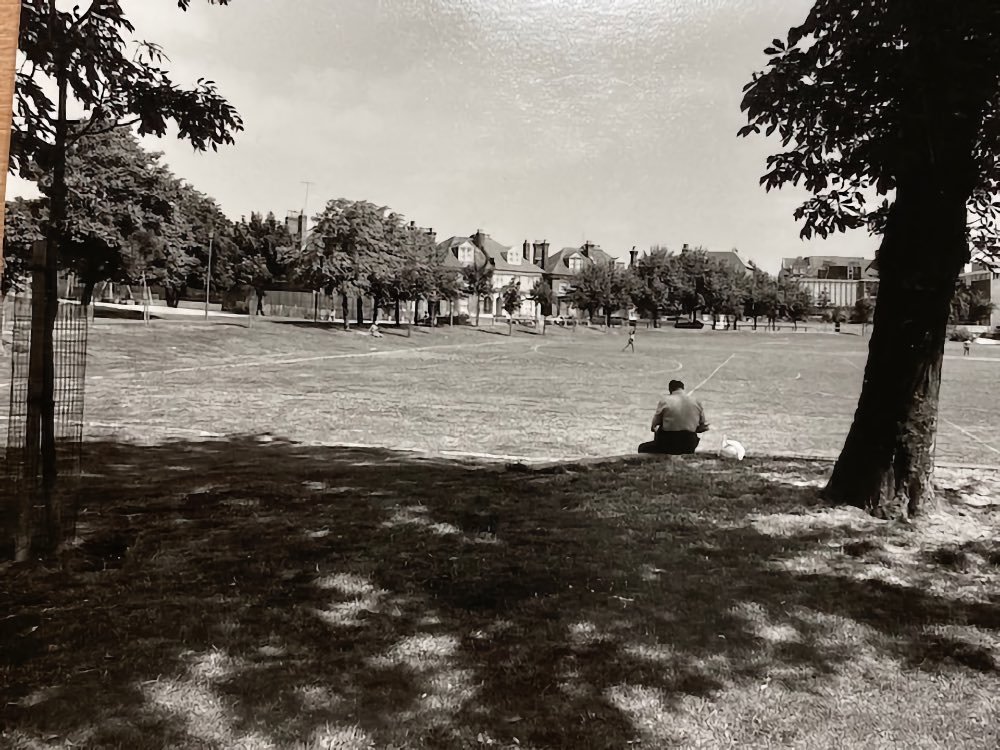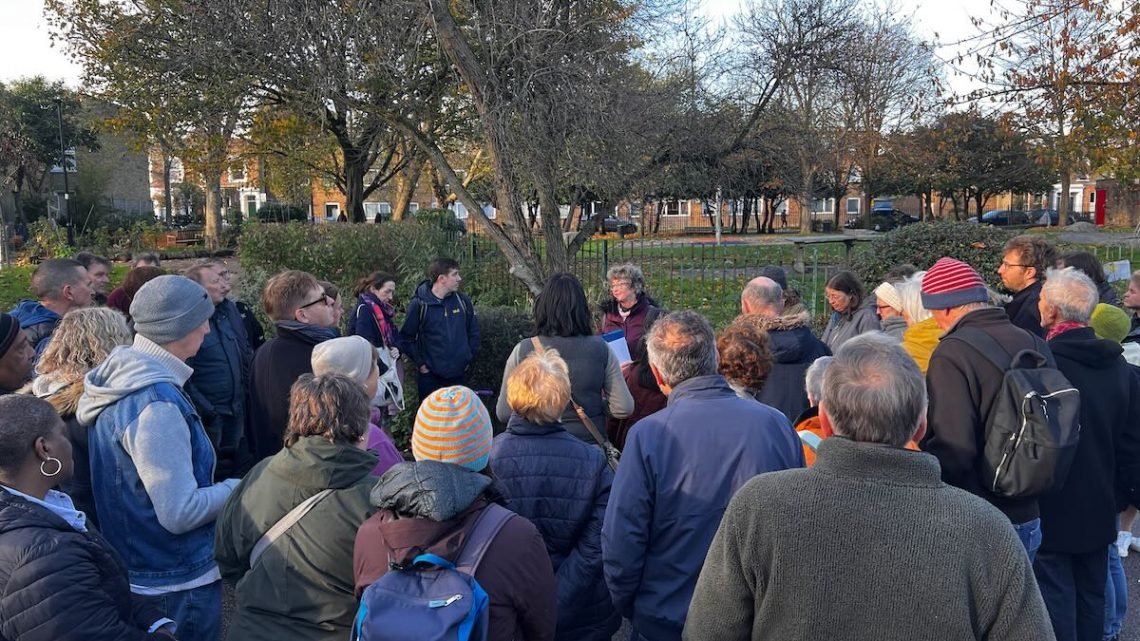
What we learned about Wray Crescent
We enjoyed our best attended Tolly Talk ever, when around 70 friends and neighbours got together to join Islington guide, Oonagh Gay on a walk through our local history.
An ancient place
During a story-fueled hour around the park, Oonagh kept us captivated with her telling of the history of the area.
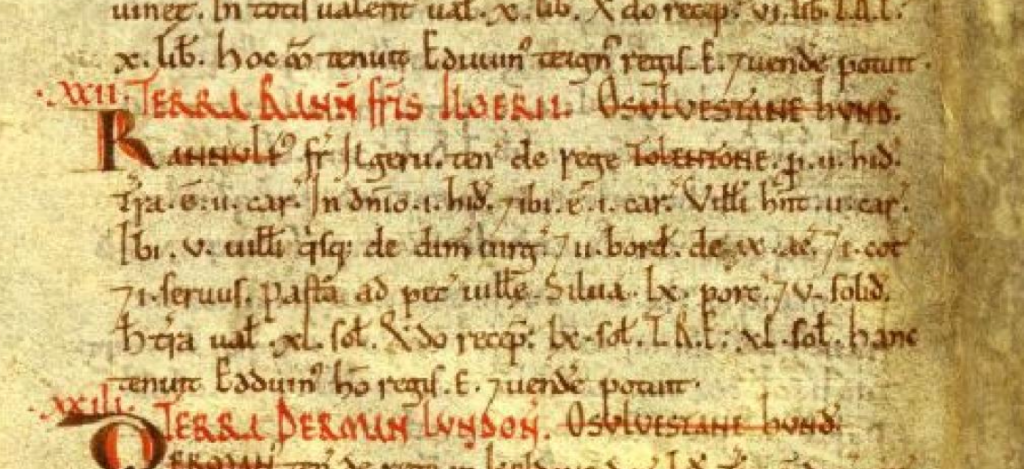
How the name Tollington in the context of this area is mentioned in the Domesday Book – imagine all those who have lived, worked, or passed through here.

The tales she told were fascinating and illustrated the deep diversity that has always characterized this part of Islington.
As in days gone by, residents in the area continue to work towards improving the area for the community and it was interesting to hear that the park was only created in the 70’s – an archive photo shared at the event showed just how similar the playground we have in place today is to what we had then.
Here is that photograph:
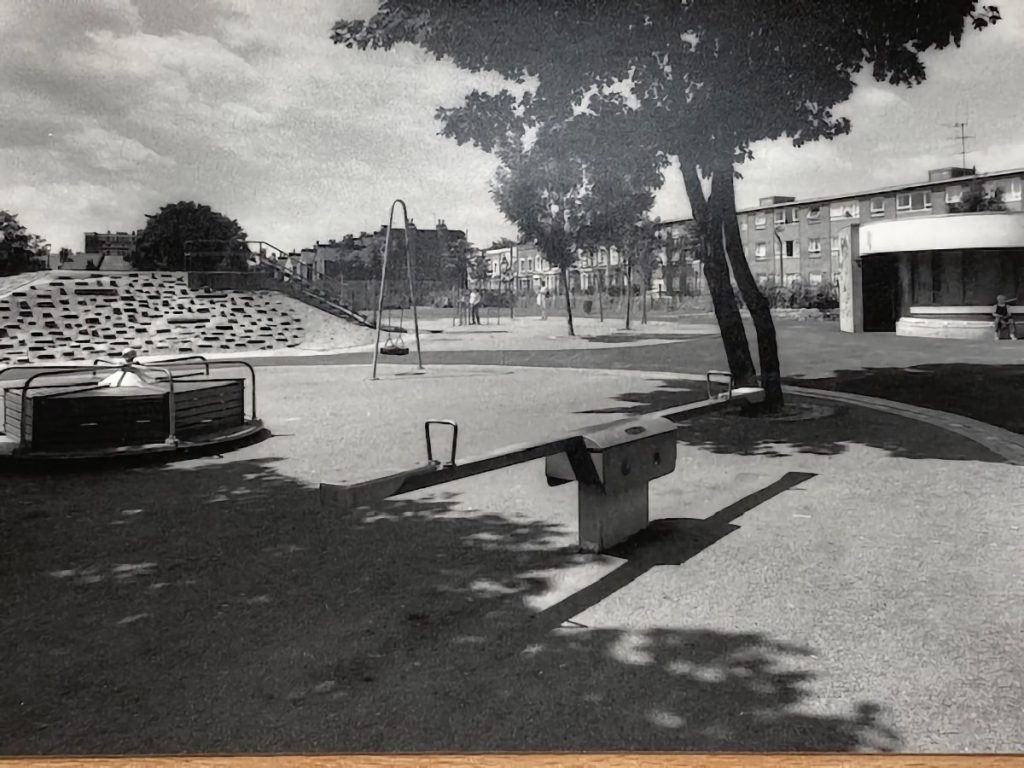
We heard about Claude Duval, the original dandy highwayman who lived nearby and set all the women’s hearts beating.
When he was sentenced to hang, the ladies of the court prevailed on the King to commute his sentence. The monarch attempted to do so, but the Judge refused to be swayed.
Duval did sway, however, on the hangman’s noose. And on his death and subsequent burial the streets were said to be lined by tearful women mourning his loss. I guess he was the equivalent of a rock star.
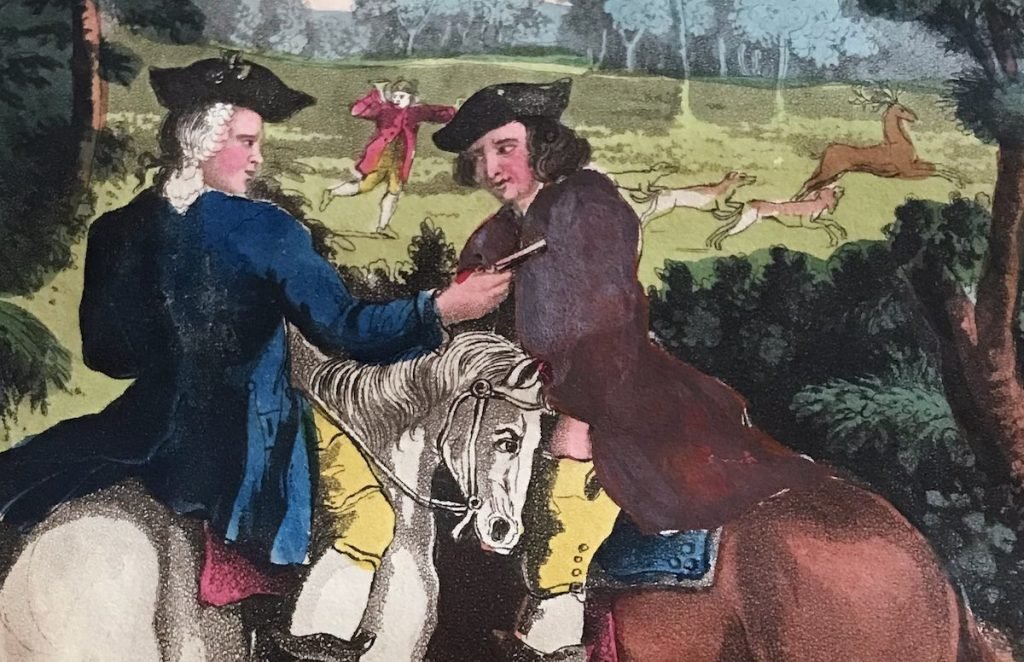
We also head of Frederick Seddon, the “fly paper murderer’ of Tollington Park.
He was said to have surrounded his lodger, Miss Eliza Ann Barrow, with fly paper laced with arsenic so she could not avoid touching it and becoming poisoned. During the trial, it was revealed the fly paper had been purchased by the daughter of Seddon.

Both men came to a sticky end, but only one of them had crowds weeping and crying his name, “Duval”, when he was laid to rest at the Actor’s Church.
We heard uplifting stories of David Stanton, the famous cyclist who created road racing on a penny farthing.
We also heard of our beloved Yvonne Connolly, who came here from Jamaica as part of the Windrush generation in 1963. She went on to become the first Black female headmistress, battling deep racism as she did.
A local person — she lived on Bracey Street – we named our vegetable garden after her. She was given far more significant recognition before she sadly died, including this statement from our new King. Rest in power, Yvonne.
We heard about Jazzy B who was born and lived in Grenville Rd.
He revolutionised the music industry and founded Soul II Soul. A friend of his from around the corner was George Power who founded Kiss FM, Crackers and The Electric Ballroom. We wanted to pop a YouTube of one of his songs, but YouTube won’t let us, so you can hear one here.
We learned that acclaimed photojournalist Don McCullen attended what is now the Islington Arts and Media School. And we learned John Lyon, aka Jonny Rotten of The Sex Pistols, Public Image and butter ads was born and lived on The Six Acre Estate.
Oonagh also told us a little about St Mellitus; how the war memorial there includes the names of all those in the parish who went to serve in WW1, not only those who lost their lives in the war.

She brought us to the spot that was once occupied by a convalescent home for young women with TB, we walked on to see the property that had been a convent and further on to see the building that had been a piano factory.
The talk was informative, and it was incredibly interesting to learn so much about our neighbourhood, which has a rich history of super diverse, community-minded residents. Oonagh will we think return to give us another stroll around our history in 2023. We’ll be sure to let you know when that talk takes place.
Now, please follow us on Facebook and join our mailing list so we can keep you up to date with what we do! And if you have any images or stories of the area over the years, please dig them out. We know there’s huge interest in seeing them!
With thanks to Rachael for (most of) the words
